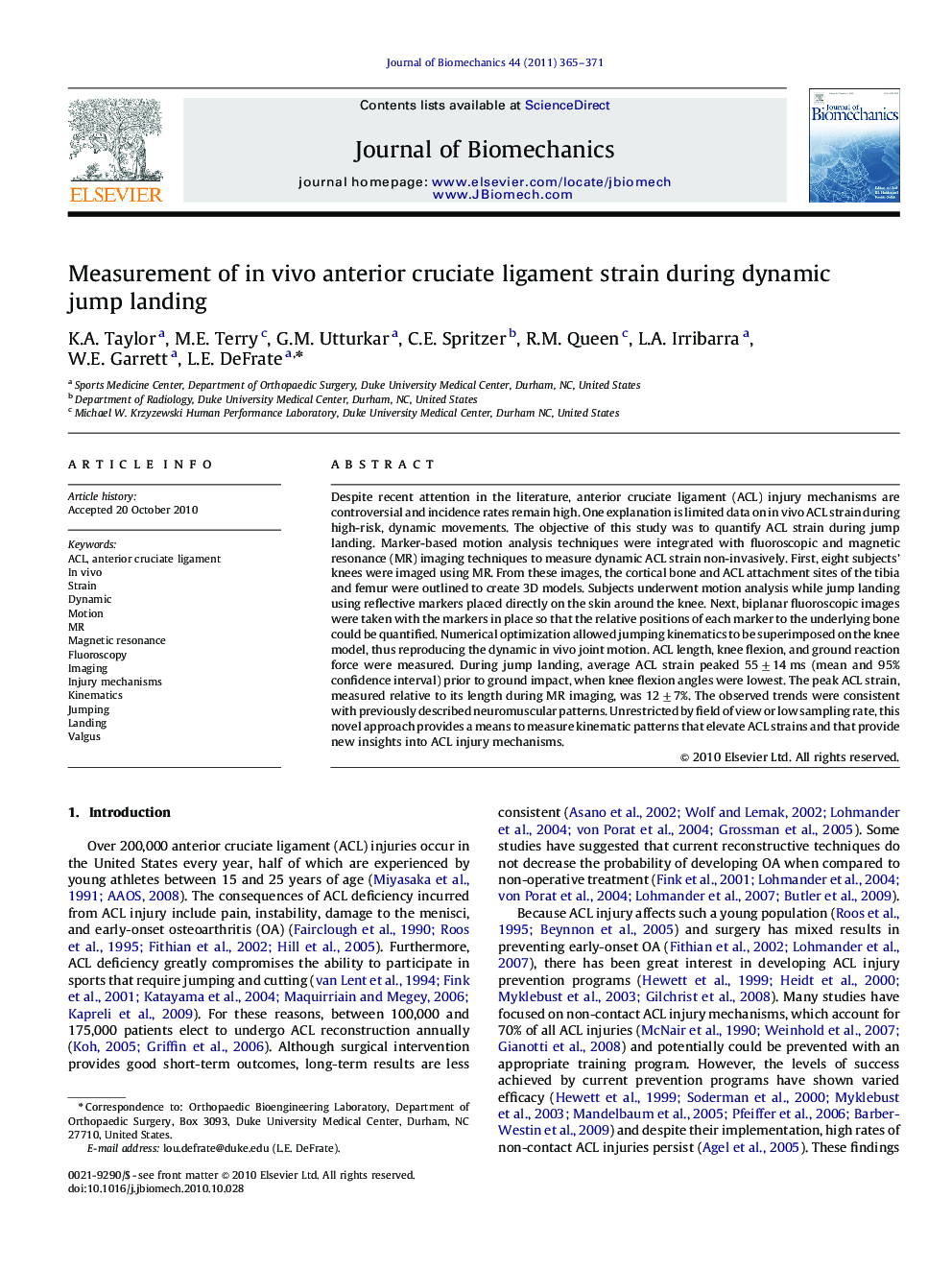| Article ID | Journal | Published Year | Pages | File Type |
|---|---|---|---|---|
| 873038 | Journal of Biomechanics | 2011 | 7 Pages |
Despite recent attention in the literature, anterior cruciate ligament (ACL) injury mechanisms are controversial and incidence rates remain high. One explanation is limited data on in vivo ACL strain during high-risk, dynamic movements. The objective of this study was to quantify ACL strain during jump landing. Marker-based motion analysis techniques were integrated with fluoroscopic and magnetic resonance (MR) imaging techniques to measure dynamic ACL strain non-invasively. First, eight subjects’ knees were imaged using MR. From these images, the cortical bone and ACL attachment sites of the tibia and femur were outlined to create 3D models. Subjects underwent motion analysis while jump landing using reflective markers placed directly on the skin around the knee. Next, biplanar fluoroscopic images were taken with the markers in place so that the relative positions of each marker to the underlying bone could be quantified. Numerical optimization allowed jumping kinematics to be superimposed on the knee model, thus reproducing the dynamic in vivo joint motion. ACL length, knee flexion, and ground reaction force were measured. During jump landing, average ACL strain peaked 55±14 ms (mean and 95% confidence interval) prior to ground impact, when knee flexion angles were lowest. The peak ACL strain, measured relative to its length during MR imaging, was 12±7%. The observed trends were consistent with previously described neuromuscular patterns. Unrestricted by field of view or low sampling rate, this novel approach provides a means to measure kinematic patterns that elevate ACL strains and that provide new insights into ACL injury mechanisms.
